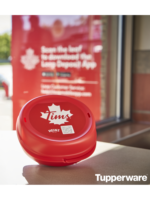Optimizing packaging for a distribution journey fraught with hazards

It’s happened to everyone. After days of anticipation, that package you’ve been eagerly awaiting finally shows up on your front doorstep. The elation of finally receiving the item, quickly turns to disappointment as you stare at the scuffed, torn, and stained box at your feet. What in the world happened to it? Did it accidentally get routed through a warzone? The trepidation is palpable as you carefully cut open the box, almost scared to look inside only to discover that it will look just as bad as the outside.
This scenario may not play out the same exact way when a grocer receives a shipment of bleach or a home improvement retailer unloads a fresh box of nails, but make no mistake: The condition of any product’s packaging on arrival makes a strong impression. Damaged boxes lessen the perceived value of the contents inside, but more importantly, often indicate that those contents may have also suffered damage in transit. For manufacturers and ecommerce retailers, the real costs from that damage can manifest in the form of markdowns, return shipment costs, missed deadlines, product dispositions, and poor customer satisfaction.
Packaging is the initial barometer of a product’s quality.
Anyone who seeks to deliver packages unscathed should fully understand that the benefits of optimized packaging are multi-faceted, both protecting contents and presenting the product in a positive light. Taking the time to design solutions that protect merchandise and remain in tip-top shape throughout the supply chain yields measurable results. But how do you develop packaging that looks great as well as protects packages from all of the forces and environments they will encounter between leaving the factory and arriving on store shelves or customer doorsteps. The perils freight faces during distribution can be infinite, but the primary hazards fit into seven basic categories.
1) Human and mechanical handling. Forklifts, clamp trucks, push-pull pallets, and manual handling are all commonly employed throughout supply chains; any one of these forces can spell trouble for packaging, as it makes its way through warehouses and onto trucks. Crushed corners, punctures, and internal damage are all common results of poor handling.
2) Warehouse stacking. As warehouses work to optimize space, boxes can get stacked dangerously high and tip over. Stacks are also often placed too close to one another and damaged as machinery like forklifts attempt (and fail) to navigate around them. Shippers are also increasing package density, which affects stackability. Bulging cases, creased packaging, and crushed bottom rows are signs of poor warehouse stacking.
3) In-transit stacking. Packages are also stacked in trucks, and the motion of the vehicle constantly bumps and shifts the stacks. Dynamic compression from road forces easily results in hundreds of pounds of downward pressure per square foot on stacked boxes.Without appropriate dunnage and cushioning to brace these stacks, damage of fragile contents is likely.
4) Vehicle vibration. Even on a perfectly smooth surface, the suspension system of a truck produces its own natural resonant frequency. Products in the freight that have the same resonance experience amplified vibration--for example, air conditioners--and are easily damaged. Only lab tests that reproduce amplitudes and frequencies experienced during transport can predict this detrimental vibration so that appropriate steps can be taken to avoid it.
5) Loose load vibration. Most abrasion in shipping is a direct result of loose load vibration, or road noise. Road tar strips, joints, even embedded reflectors and grooves in road surfaces cause almost constant vertical, latitudinal, and longitudinal vibrations. Lighter packages that do not exert enough weight to optimize truck trailer springs are particularly at risk, but any freight can be damaged from these vibrations.
6) Rail switching horizontal impact. Intermodal transport subjects items shipped via rail box cars to significant jarring when the cars are sorted in switchyards. Horizontal impact speeds of up to 8 miles per hour compress freight, easily damaging even well-packaged products . Equipment that transports containers between rail and truck also pose damage risk as the freight is moved and shifted into place.
7) Temperature and humidity. Many items have specific temperature and humidity requirements that can be difficult to maintain, resulting in degradation of the items that may spread to packaging through sweating and moisture transfer. Securing climate control at every step of the supply chain is imperative for this freight, and specialized packaging can help. It’s important to note that items not affected by temperature and humidity can be easily become impacted if neighboring freight leaks moisture onto them.
So how do you protect a package from all these hazards without breaking the bank? The key is to discover the equilibrium between damage cost and package cost, which varies depending on the nature of the supply chain itself and the freight.
For most packages, drop testing, stack testing, and vibration testing make sense because they address hazards from handling and transport that are rather unavoidable. In some instances, simple changes to the way packages are handled can make meaningful differences. For example, palletizing units, controlling warehouse climates, and using air-ride vans can make big differences in reducing damage. Items with high per unit costs can also benefit from having package features built-into the design of the product itself, lessening the need for pricey packing materials.
Careful analysis of freight, packaging, and the supply chain are essential for ensuring that products arrive at their destinations unscathed. The price of not doing so can be seen in the real cost of damage, and the loss of customer satisfaction -- and that, can never be accurately measured.

Tom Blanck is a Certified Packaging Professional and leads the Packaging Optimization competency at Chainalytics where he manages the delivery of supply chain packaging optimization and complex package engineering services as well as packaging value improvement programs for leading supply chains globally.
Looking for a reprint of this article?
From high-res PDFs to custom plaques, order your copy today!






